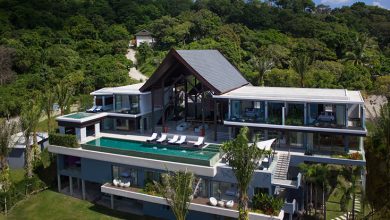Retire in Paradise: Unlocking the Secrets of Thailand’s Retirement Visa

Imagine waking up to the sound of ocean waves or the hum of a quiet mountain village. You sip fresh coconut water, explore vibrant markets, or spend afternoons enjoying $10 massages and Michelin-worthy street food. For many retirees, this isn’t just a vacation fantasy—it’s daily life in Thailand.
But to retire in Thailand, paradise isn’t the only thing you need. You also need a Thailand retirement visa—a document that opens the door to long-term living in one of the world’s most welcoming (and affordable) destinations. While the lifestyle is laid-back, the process of obtaining the visa takes planning, paperwork, and understanding the rules.
Let’s walk through the essentials—and a few insider tips—to help you unlock the secrets to retiring in Thailand with ease.
Why Choose Thailand for Retirement?
Before we dive into the visa itself, let’s look at why Thailand has become a retirement haven:
-
Low cost of living: Even on a modest pension or Social Security income, retirees can live comfortably—especially outside Bangkok and tourist hotspots.
-
High-quality healthcare: Thailand’s private hospitals offer excellent care at a fraction of Western costs.
-
Warm climate year-round: Beaches, mountains, and tropical forests—all within reach.
-
Expat-friendly communities: Places like Chiang Mai, Hua Hin, and Pattaya have thriving retiree groups.
-
Cultural richness: From golden temples to Thai cooking classes, there’s always something new to experience.
But none of this matters without the right visa.
What Is the Thailand retirement visa
The term “retirement visa” in Thailand generally refers to one of two types of long-stay visas for foreigners aged 50 and older. These visas allow you to live in Thailand for a year or longer, with the possibility to renew annually.
Two Main Options:
-
Non-Immigrant O-A Visa
-
Applied for from outside Thailand.
-
Grants a one-year stay (renewable).
-
Requires health insurance.
-
-
Non-Immigrant O Visa (Retirement Extension)
-
Applied for within Thailand, after entering on a tourist visa or visa exemption.
-
Also grants a one-year stay, renewable.
-
Health insurance may not be required (depending on immigration office).
-
Both visas allow you to stay long-term but come with specific conditions you must meet.
Key Eligibility Requirements
To qualify for either retirement visa type, you must:
✅ Be at least 50 years old
✅ Meet one of the following financial conditions:
-
800,000 THB (~USD 22,000) in a Thai bank account, held for at least two months prior to applying (and three months after approval).
-
A monthly income of 65,000 THB (~USD 1,800), proven via pension statements or a letter from your embassy.
-
Or a combination of both, totaling 800,000 THB per year.
✅ Have no criminal record
✅ Be free of certain contagious diseases (a simple health certificate may be required)
✅ Hold adequate health insurance (required for O-A visa)
The Application Process: Step-by-Step
🛬 If Applying from Outside Thailand (O-A Visa)
-
Apply at a Thai consulate or embassy in your home country.
-
Submit:
-
Passport (valid for at least 1 year)
-
Recent passport photos
-
Financial proof
-
Police clearance certificate
-
Health check certificate
-
Approved health insurance policy
-
-
Receive a one-year visa, allowing multiple entries.
-
You must report your address every 90 days.
🏝️ If Applying Inside Thailand (O Visa + Extension)
-
Enter Thailand on a tourist visa or visa exemption.
-
Open a Thai bank account and deposit required funds.
-
Wait 2 months (if using bank funds).
-
Apply at your local immigration office.
-
Receive a one-year extension of stay (renewable annually).
-
Perform 90-day reporting and maintain financial requirements.
What About Re-Entry?
If you plan to travel outside Thailand while holding a retirement visa, don’t forget to apply for a re-entry permit. Without it, your visa becomes void the moment you leave the country.
You can apply for a single-entry (valid for one exit/return) or a multiple-entry permit (valid for one year).
What Life Looks Like on a Retirement Visa
✅ You can live comfortably—especially in places like Chiang Mai, Isaan, or smaller beach towns.
✅ You can rent or own a condo, but foreigners cannot own land.
✅ You cannot work, even part-time or online for Thai companies. If you need income, it must come from pensions, savings, or remote work abroad.
✅ You’ll build a routine of 90-day reporting, annual renewals, and maybe visa runs (if you forget a re-entry permit).
Common Pitfalls (and How to Avoid Them)
❌ Not meeting the financial requirements: Your bank account must show a consistent balance, or your income must be verifiable through official documents.
❌ Missing 90-day reports: Late reporting can lead to fines or complications.
❌ Letting your visa lapse during travel: Always get a re-entry permit if you plan to leave.
❌ Assuming things are the same everywhere: Immigration rules can vary slightly by province or even individual officer. Double-check with your local immigration office.
Final Thoughts: Is It Worth It?
Retiring in Thailand is more than just a dream—it’s a viable and often life-enriching reality. The process to get a retirement visa can seem intimidating at first, but with the right preparation, it’s manageable.
If you’re looking for warm weather, rich culture, a lower cost of living, and a community of like-minded people living their best lives, Thailand might just be the retirement paradise you’re looking for.
And now that you’ve unlocked the visa secrets, paradise is only a few steps away.



